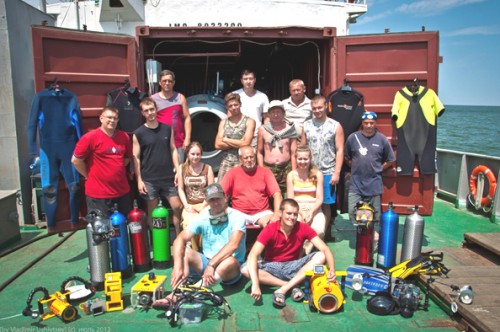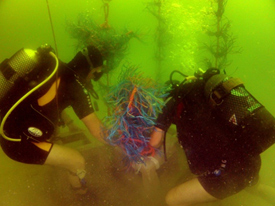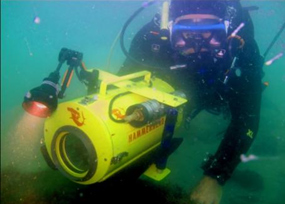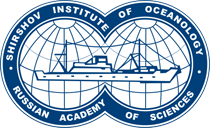Director of the Caspian Branch of the IO RAS - PhD (Biological Sciences) Vladimir Ushivtsev
Address of the Caspian branch:
6 Savushkina st., 27 builing, Astrakhan, Astrakhan region, 414056, Russian Federation
tel. 8(8512)-54-45-59
6 Savushkina st., 27 builing, Astrakhan, Astrakhan region, 414056, Russian Federation
tel. 8(8512)-54-45-59
The Caspian Branch of the IO RAS was established in 2005.
The main goal of the Branch is to carry out fundamental scientific research and applied developments in the field of oceanology using the research fleet, aircraft, underwater and spacecraft and other various technical means that are under its right of operational management, leased or jointly with the owners of these funds.
The main activities of the Branch are:
- fundamental research on the integrated study of the World Ocean and the southern seas of Eurasia
- ocean and sea physics, climatology
- hydrochemistry of the seas and oceans, pollution of the world ocean
- biology and ecology of the seas and oceans, anthropogenic variability of marine ecosystems
- geology, geophysics and geochemistry of the lithosphere of the seas and oceans
- technical means of ocean exploration
- development and creation of new oceanographic observation technologies
There are 18 employees at the Caspian Branch of the IO RAS, including 4 Doctors of Science and 4 Candidates of Science.

The branch performs planned fundamental research work (PFRW) on the topic: "Peculiarities of the state of the environment and biota on the shelf of the Caspian Sea in the areas of current and future production of hydrocarbon resources."
At the licensed sites of oil companies, monitoring of the state of the environment and biota is carried out in the monitoring mode. Biotechnologies are being developed for self-purification and conservation of the biodiversity of the Caspian biota.
 |
 |
In the waters of the Northern Caspian, a number of polygons are equipped with bottom stations - special underwater structures, on which local ecosystems with a high degree of comparability have been formed. Living in different areas of the sea, and having the same species composition of communities, the ecosystem of each station individually responds to the environment and allows monitoring observations and assessing the degree of influence of various factors, both natural and anthropogenic.
Viable and ecologically capacious models of bottom stations, protected by patents, have been developed:
- "Reef module", RF Patent No. 63315 (author V. Ushivtsev et al);
- "Reef module", RF Patent No. 93773 (author N. Vodovsky);
- "Artificial reef", RF Patent No. 136818 (author V. Ushivtsev et al);
- "Bottom-pelagic biological station", RF Patent No. 039710 (author V.B. Ushivtsev et al).
The branch has created a methodology for assessing the impact of environmental factors on the biota of the sea - "Methodological recommendations for assessing the impact of offshore oil and gas facilities on the natural environment". The method is based on the idea of artificial formation of local ecosystems with a high degree of comparability. Such ecosystems are formed at bottom stations. Ecosystems are inhabited by a number of indicator organisms, according to which the quality of the environment at a given observation point is assessed. To control the ecological and toxicological state of a particular area of the sea, the water area is equipped with a network of bottom stations. The qualitative and quantitative composition of bottom station communities accumulates information about the presence, origin, trajectory of movement, composition and degree of danger of a particular pollution.
An underwater remote-controlled inspection apparatus has been developed and patented, which makes it possible to conduct observations and filming in adverse storm conditions:
- "On-board telemetry complex", RF Patent No. 93773 (author V. Ushivtsev et al.);
Applied scientific research is carried out on economic agreements and contracts with various state and commercial organizations. The branch won the following tenders:
- "Industrial environmental monitoring in the area of the Korchagin field in 2014-2016."
- "Processing of materials of seismic observations at the geodynamic polygon of the Korchagin field in 2014-2016."
- "Monitoring of the state of the sea shelf, environment and biota in the places of prospecting and appraisal drilling in the licensed areas of OOO LUKOIL-Nizhnevolzhskneft in the Caspian Sea in the period from 2012 to 2014."
- "Development of a stationary environmental monitoring system using bottom stations from 2012 to 2014"
- “Processing of materials of seismic observations at the geodynamic test site of the Korchagin field based on the results of pilot operation of the geodynamic monitoring system during 2010-2013. Development of the Technical design of the geodynamic test site»
Scientific developments of the branch received high marks at international salons and exhibitions:
- gold medal of the X-th Moscow International Salon of Innovations and Investments - 2010 for the development of an underwater remote-controlled search and inspection complex for monitoring observations in the Caspian Sea
- bronze medal of the Contest of Innovative Projects and Developments of the VII International Forum on Intellectual Property "EXPOPRIORITY - 2015" for the project "Bottom biostation for ecological research - a tool for diagnosing the state of the biota of the Caspian Sea shelf".
In 2014, the Caspian Branch was included in the National Register "Leading Scientific Organizations of Russia".




